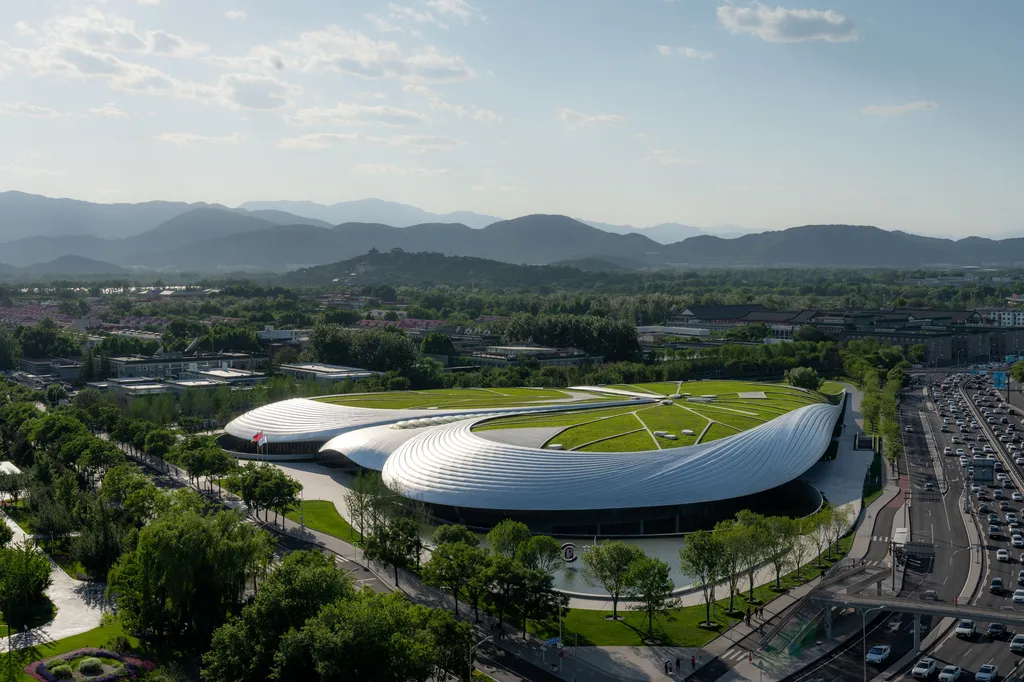In the heart of Beijing, a transformative vision is taking root, one that promises to redefine urban living and set a new benchmark for sustainable city development. Led by Xiaoxi Li from the School of Landscape Architecture at Beijing Forestry University, a groundbreaking study published in *Fengjing Yuanlin* (which translates to “Scenery and Gardens”) explores how the concept of a “Garden City” can be brought to life through a trio of innovative strategies: scientific greening, landscape colorization, and spatial verticalization.
As cities worldwide grapple with the challenges of urban expansion and the pressing need for ecological resilience, Li’s research offers a timely and practical framework for enhancing urban quality and fostering a harmonious coexistence between humans and nature. The study, which synthesizes policy reviews and empirical evidence, delves into the core questions of “where to construct,” “who constructs,” and “how to construct” garden spaces, providing a comprehensive action plan for urban planners, policymakers, and stakeholders.
At the heart of this research lies the “triple greening” approach, a technical foundation that drives the transformation of gray urban spaces into vibrant, green environments. “We are not just talking about adding more parks or planting more trees,” Li explains. “This is about a systematic overhaul of how we perceive and utilize urban spaces, moving from two-dimensional to three-dimensional, and from closed to open environments.”
The study proposes four key pathways for Garden City construction, each addressing critical aspects of urban development. First, it emphasizes the establishment of a resilient ecological foundation by integrating water bodies, green corridors, and urban forests into interconnected networks. This approach not only optimizes ecosystem services but also conserves biodiversity, creating climate-resilient urban spaces.
Second, the research advocates for city-garden integration and spatial openness, enhancing greening quality and promoting the ecological transformation of gray infrastructure. Mechanisms such as “de-fencing” and time-sharing access models are suggested to enable shared green spaces and equitable access across communities.
Third, the study highlights the importance of multi-level collaborative governance, establishing a three-tier model that ensures accountability across planning, construction, and maintenance. Digital tools and intelligent management systems are recommended to support full lifecycle governance of green infrastructure.
Lastly, the research proposes innovative participatory co-construction mechanisms, involving government leadership, enterprise support, community co-building, and public participation. Through adoption programs, ecological education, and digital empowerment platforms, residents are encouraged to become active stewards in sustainable urban greening.
The implications of this research extend far beyond the borders of Beijing, offering valuable insights for cities worldwide. By embracing the “space-actor-function” framework, urban planners and policymakers can drive a systematic transformation that integrates shared understanding, coordinated spatial planning, and collaborative governance.
For the energy sector, the shift towards Garden Cities presents a unique opportunity to integrate renewable energy solutions into urban landscapes. Vertical greening, for instance, can be combined with solar panel installations, creating energy-generating facades that contribute to the city’s power grid. Additionally, the focus on ecological resilience and biodiversity can support the development of urban microgrids and decentralized energy systems, enhancing the overall sustainability of cities.
As Xiaoxi Li’s research demonstrates, the future of urban development lies in a holistic approach that prioritizes ecological resilience, public welfare, and collaborative governance. By embracing the principles of scientific greening, landscape colorization, and spatial verticalization, cities can evolve into vibrant, sustainable ecosystems that benefit both residents and the environment. Published in *Fengjing Yuanlin*, this study serves as a beacon of innovation, guiding the way towards a greener, more sustainable urban future.

